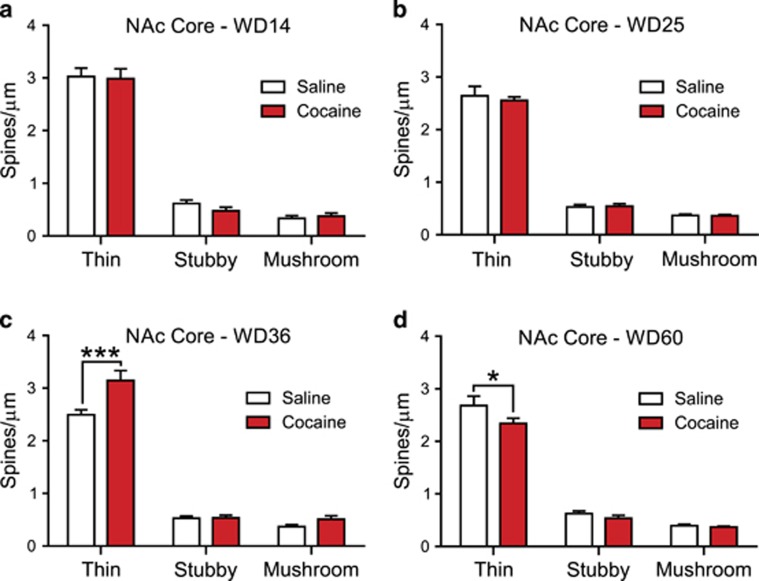Figure 3.
Cocaine self-administration regulates the number of thin spines in the nucleus accumbens (NAc) core in a manner that depends on the length of withdrawal. (a) On withdrawal day 14 (WD14), the density of dendritic spine subtypes did not differ between saline and cocaine groups. (b) On WD25, the density of dendritic spine subtypes did not differ between saline and cocaine groups. (c) On WD36, the cocaine group exhibited a significant increase in the density of thin spines in the NAc core in comparison with saline controls. This increase in thin spine density is likely the primary driver behind the increase in total spine density on WD36 (Figure 2c). (d) On WD60, there was a significant reduction in the density of thin spines in cocaine animals compared with saline controls, but no change in the density of any other dendritic spine subtype. Thus, alterations in thin spines appear to underlie results presented in Figure 2d. *p<0.05 and ***p<0.001.

